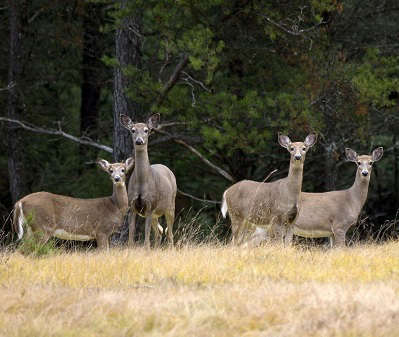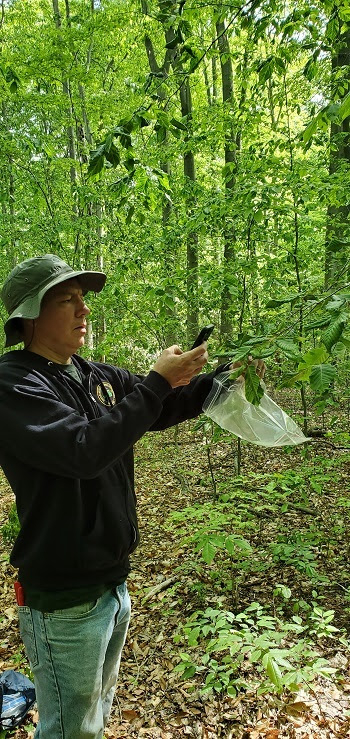West Nile Virus found in Michigan ruffed grouse

No evidence of human infection from eating properly cooked gameFor the first time, the Michigan Department of Natural Resources recently confirmed the presence of West Nile Virus in the state’s ruffed grouse population.
Five birds collected from August through October, including two found dead and three that were shot by hunters, were submitted for testing to the DNR’s Wildlife Disease Laboratory in Lansing, where the confirmation of West Nile Virus was made.
West Nile Virus is primarily transmitted to humans through the bite of infected mosquitoes. Most people infected with the virus do not show symptoms.
There is no evidence of human infection from eating properly cooked game that has been infected with West Nile Virus. As a general precaution, wild game meat should be cooked thoroughly, to an internal temperature of 170-180 degrees. Hunters should wear gloves when handling or cleaning game.
“We’ve had West Nile Virus in Michigan since 2002,” said Thomas Cooley, a DNR wildlife biologist and pathologist at the Wildlife Disease Laboratory. “It’s the first year that we’ve seen it in grouse.”
In addition to five ruffed grouse testing positive for West Nile Virus at the disease lab, five grouse were tested that did not have the virus.
This year, just over 200 animals have been confirmed with West Nile Virus from 60 of Michigan’s 83 counties – including all 15 counties in the Upper Peninsula. The ruffed grouse testing positive for the virus included two from Iron County and one each from Delta, Roscommon and Missaukee counties.
The Michigan Department of Health and Human Services said there have been 39 human cases of West Nile Virus reported in Michigan this year.
“We have received several inquiries from hunters about West Nile Virus and ruffed grouse,” said John Pepin, DNR deputy public information officer. “We want to provide information on the virus to help everyone better understand its presence in Michigan and its connection to ruffed grouse populations.”
Other states, including Pennsylvania, have been studying the effects of West Nile Virus on ruffed grouse populations. No clear consensus has been reached among researchers.
The Pennsylvania Game Commission began conducting research in 2014.
“The commission began the West Nile Virus research to better understand the impact of the virus on ruffed grouse by first conducting an experimental infection trial on chicks hatched from wild-collected grouse eggs in Pennsylvania,” Cooley said.
The experimentally-infected ruffed grouse chicks hatched from eggs collected in the wild showed West Nile Virus had caused many infected chicks to die or suffer organ damage.
“The recent Pennsylvania Game Commission research, with partners including the Ruffed Grouse Society, on the effect of West Nile Virus on ruffed grouse populations is a call to action to create more high-quality young forest habitat at a landscape scale,” the Society said in a post on its website. “Although West Nile Virus is an additional stressor, ruffed grouse have a higher rate of survival in regions with high-quality, abundant habitat.”
Michigan has a great deal of high-value ruffed grouse habitat.
Al Stewart, DNR upland game bird specialist, said the primary question related to West Nile Virus and grouse is what can we do to reduce the impact of this disease on grouse should we discover that it is a problem for Michigan grouse populations?
“The most important activity that can be done is to maintain and create vigorous young forest habitat (primarily aspen) that is composed of multiple age-classes,” Stewart said. “Michigan has high-value ruffed grouse habitat within areas of the state, especially in the Upper Peninsula. With West Nile Virus on the horizon, it will be even more paramount that we continue to focus on early successional forest management.”
Stewart said the DNR is very focused on maintaining healthy sustainable populations of wildlife.
“We are fortunate to be able to work through a variety of partnerships to achieve this goal,” Stewart said.
Significant questions remain surrounding the connections between ruffed grouse and the virus.
“Some researchers think West Nile Virus is responsible for ruffed grouse population declines,” Cooley said. “However, not every infected bird dies.”
In the grouse testing positive for West Nile Virus in Michigan, heart lesions were discovered. Some of the birds appeared malnourished and reportedly acted strangely, allowing hunters to approach closely.
Cooley suggests hunters submit grouse for testing if they are concerned a bird might be infected. He said the blood feathers of the birds are the best for analysis, those soft tissues at the base of feathers.
“If hunters want to take the breast to eat, take that and submit the rest of the bird,” Cooley said.
In birds, West Nile Virus is strongly associated with ravens, crows and jays, hawks and owls and several other non-game species. Game species in Michigan testing positive for the virus, beyond ruffed grouse, include wild turkeys and mallards.
“Ruffed grouse hunting in Michigan is a long-standing tradition and our state is home to some of the best grouse hunting anywhere,” said Terry Minzey, DNR Upper Peninsula regional wildlife supervisor. “While we will continue to explore any effects of West Nile Virus as a stressor on ruffed grouse populations, with Michigan’s significant reserve of high-quality grouse habitat, and our continued work with partners to sustain wildlife populations, we fully expect grouse hunting to remain a spectacular experience in the state far into the future.”
To submit a ruffed grouse suspected for West Nile Virus for disease testing, contact your local DNR office to make arrangements to do so.
For more information on West Nile Virus, visit the DNR’s website or the Centers for Disease Control and Prevention.






